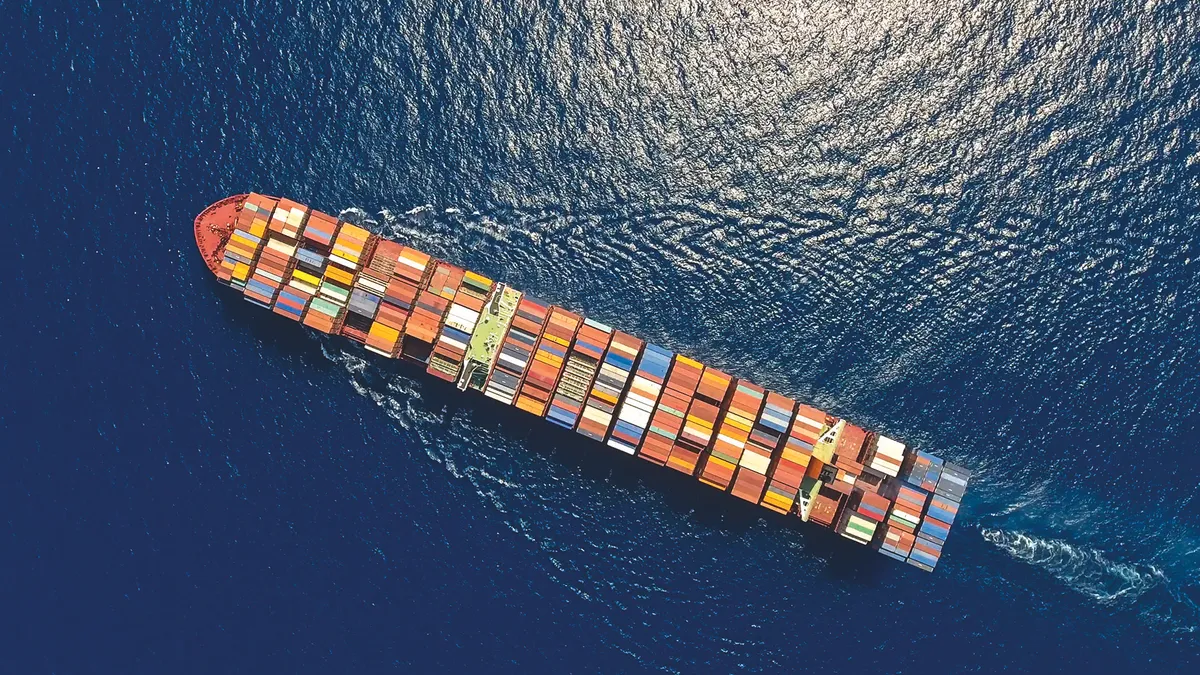Dive Brief:
- Capacity on the Transpacific for Golden Week was "unprecedented," according to Sea-Intelligence. Available space exceeded the next highest capacity year, 2018, by more than 150,000 TEUs.
- The latest schedules for the Asia to North America West Coast route show "a staggering 26.6%" YoY increase in capacity for week 40, which ran Sept. 28 to Oct. 4, according to a Sea-Intelligence report. Golden Week began Oct. 1 and is a holiday in China that usually coincides with a downturn in ocean traffic.
- "This corresponds to a reduction in blanked capacity from 8.7% to just 3.9%," Sea-Intelligence CEO Alan Murphy said in a statement. Asia to North America East Coast capacity is up more than 30% YoY with blanked capacity reduced from more than 10% to 3%.

Dive Insight:
The data from Sea-Intelligence is in line with the latest Drewry Cancelled Sailing Tracker, which showed 35 out of 636 scheduled sailings are canceled for the month of October — equal to about 5%.
"As predicted, the number of cancellations in October doubled against September due to the Chinese Golden Week seasonal volume drop," Drewry wrote. But overall, blank sailings in October are down 34% YoY.
"The total capacity deployed on all major trade will see a rise of 6%, clearly good news for shippers, who should benefit from the increase in capacity, particularly in the Transpacific and Asia-North Europe Trades," Drewry wrote.
The additional capacity has done little to deflate ocean rates. Rates from China/East Asia to the North American West Coast are up nearly 195% compared to the same time last year, and rates from China/East Asia to the North American East Coast are up nearly 72% YoY, according to Freightos. But rates are steady or declining week over week on many routes, according to Drewry.
The Chinese and U.S. governments have said they are keeping an eye on spot rate trends, but there hasn't yet been any sign of formal intervention.
The demand for ocean cargo has resulted in record-high import numbers and reports of congestion at West Coast ports. The uptick in imports comes after worldwide trade fell more than 14% from Q1 to Q2, according to the World Trade Organization.
Retail restocking has driven the turnaround as "monetary and fiscal policies have propped up incomes, allowing consumption and imports to rebound once lockdowns were eased," the WTO said in a recent release. Global trade volume for the whole of 2020 is still expected to fall more than 9% YoY, according to the WTO.















